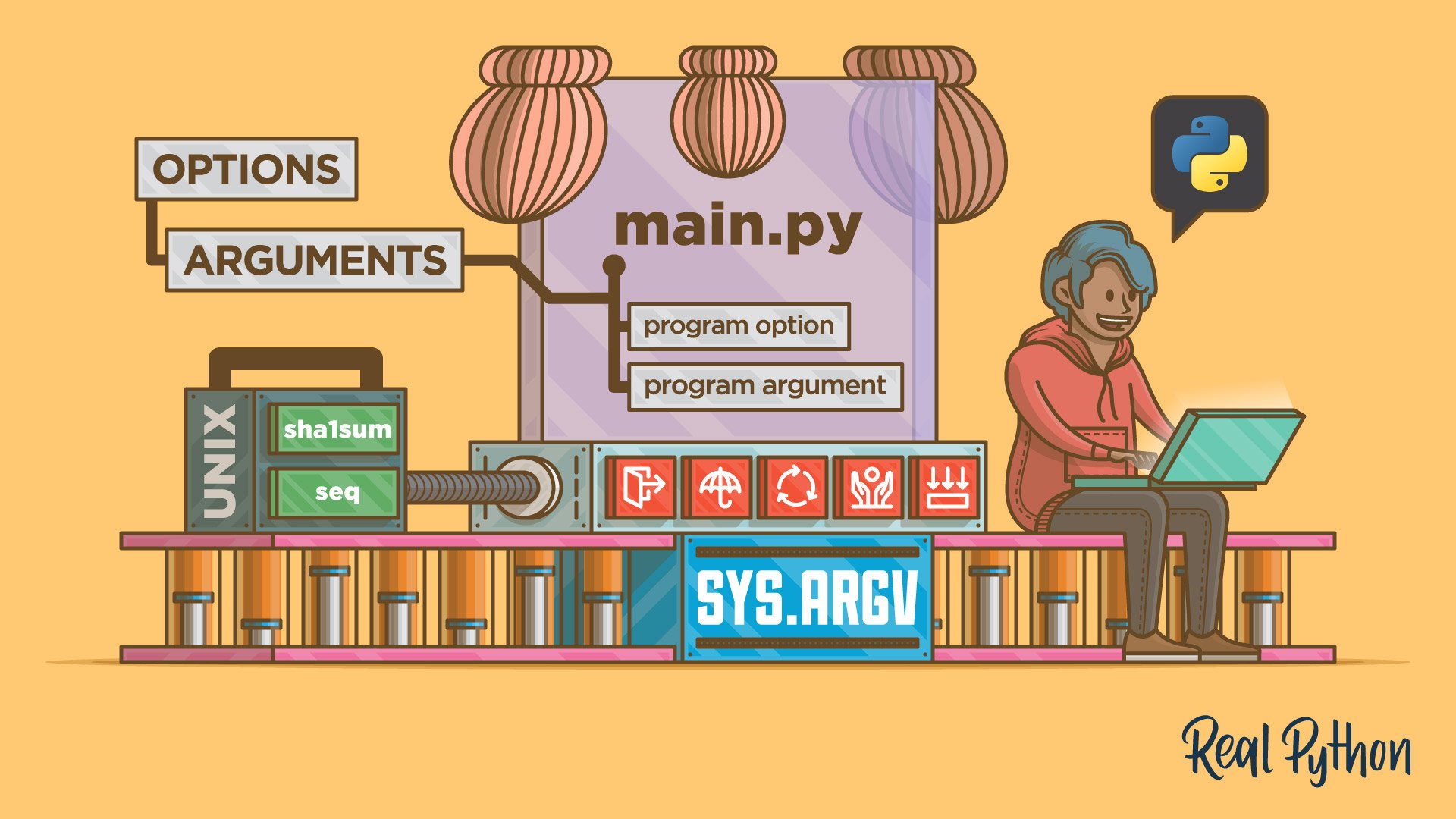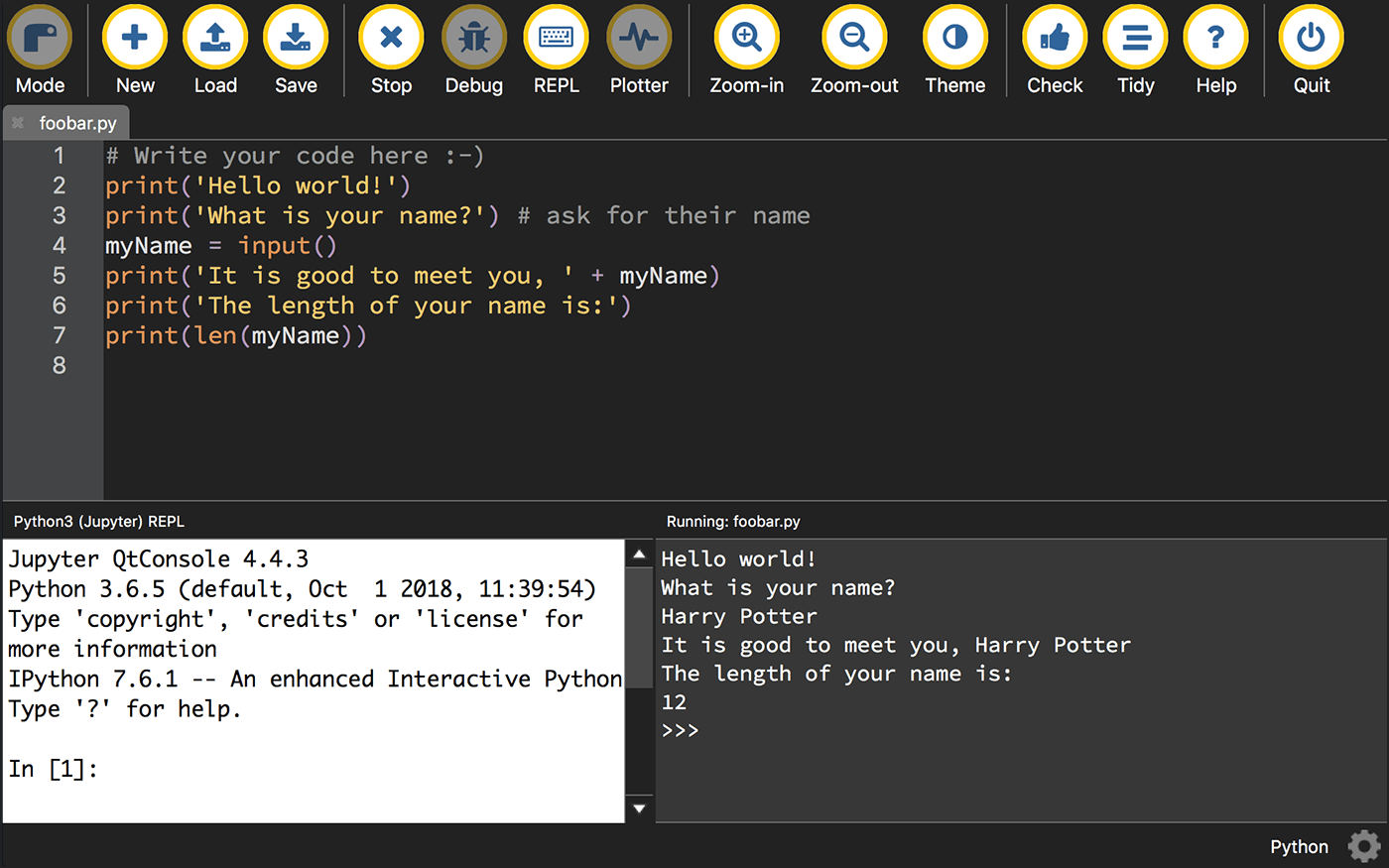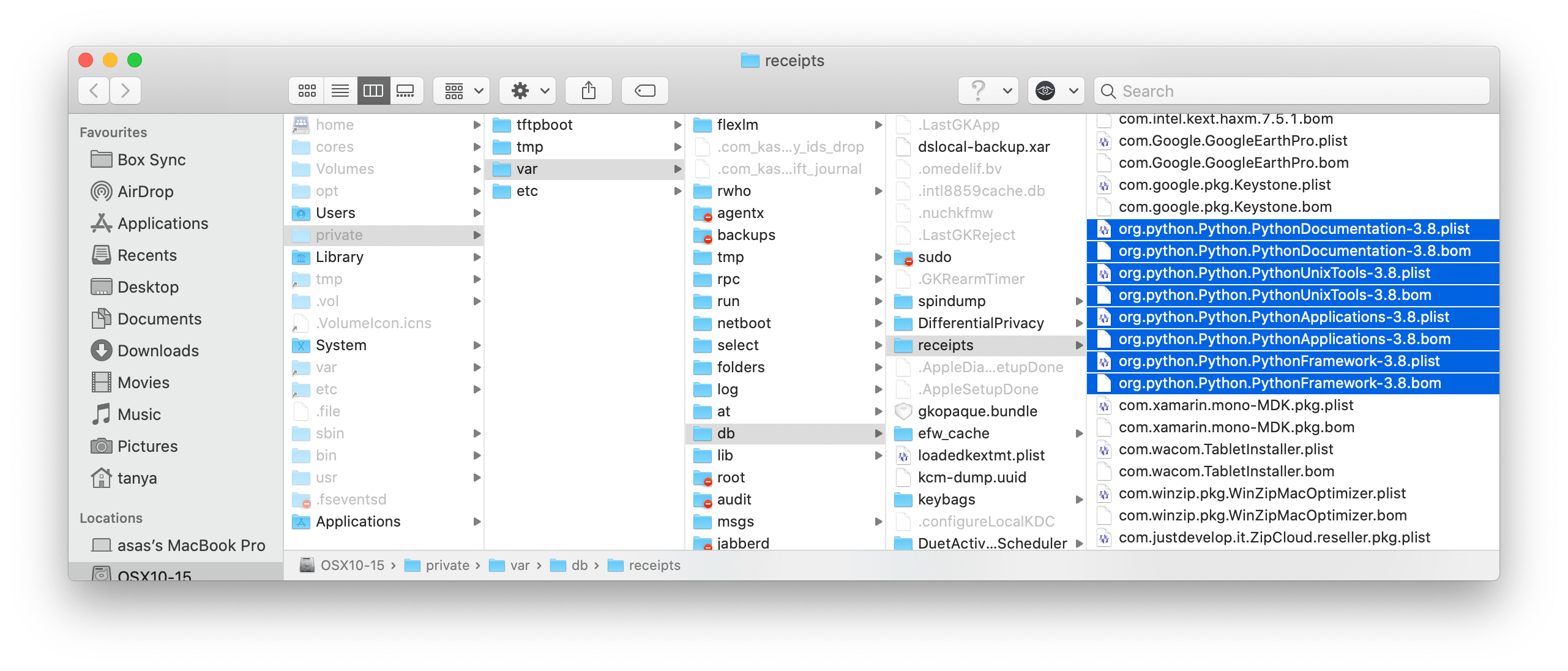

- #PYTHON ON MAC TERMINAL HOW TO#
- #PYTHON ON MAC TERMINAL CODE#
- #PYTHON ON MAC TERMINAL PLUS#
- #PYTHON ON MAC TERMINAL WINDOWS#
to know what happened with your program and proceed accordingly. This is useful for other programs, shell, caller etc.
#PYTHON ON MAC TERMINAL CODE#
There's commands/apps that are designed to keep running until the user asks it to end.Ī zero error code means a successful exit. most of the applications running from the terminal will be forced to quit. If you want to force quit “kill” a running command, you can use “Ctrl + C”. Zero is considered a “successful termination”. The exit function takes an optional argument, typically an integer, that gives an exit status. Subsequently, question is, what does exit () do in Python? exit() function allows the developer to exit from Python. They exist together simply to make Python more user-friendly.
exit() is an alias for quit (or vice-versa). 
#PYTHON ON MAC TERMINAL PLUS#
Furthermore, if you print it, it will give a message: > print (quit) Use quit() or Ctrl-Z plus Return to exit >
quit() raises the SystemExit exception behind the scenes. You can use pkill -f name-of-the- python-script. You can do it in an interactive script with just exit. Inside a script with exit(), you can do it. To stop a python script just press Ctrl + C. Switch to Insert mode by pressing i to edit the file.Īdd the command to execute the Python script. test_cron.py is the name that I have given to the script share above. You can find where you have installed it using the whereis python or the which python commands in Terminal. /usr/bin/python is where python is installed. /Users/user.name/Automation is where my python script is located. cd is the command-line argument to tell crontab where the executable file is. * * * * * is the crontab schedule expressions to schedule the script to run every minute. Structure of a Python Script Automation Command As such, there are two ways to run a Python script on macOS: through the Python Launcher app and the more common Terminal execution. The command we will use to execute the python script goes like this. Working with Python files on the Mac is a breeze, especially given some of the built-in functionality. We will now add the Python script scheduler command to in the crontab using the VI Editor. Vi Editor Commandsįirst, let’s look at the commands you can use in the vi editor. Don’t be scared, I will walk you through it. e means that you want to open the crontab file in the “edit” mode. List the current crontabĬheck if you already have a crontab created. There are three (3) available commands to work with the crontab file: crontab -l (to display), crontab -e (to create) and crontab -r (to delete). We will create and run a crontab file using the command line. In my case, I created an “Automation” folder under the /User/user.name path. py Python script and save it to a location that you have permission (see Troubleshooting to understand why). To schedule a python script execution using cron, we will: #PYTHON ON MAC TERMINAL HOW TO#
Once every specific day, at a specific time (Sunday at 12:30)Ĭron schedule expressions How to Schedule a Script Using Cron? The easiest way to create crontab schedule expressions is to use .Īlso, here is a table with all the most common expressions that you will encounter. It has 5 parameters ( * * * * *) to let you choose when you want to run your script:Ĭrontab schedule expressions CRON Schedule Expressions


Python For SEO Tutorial How to Schedule a Task With CronĬron uses schedule expressions to know when you want to execute a task. If not, start from the beginning of my Python for SEO tutorial.
#PYTHON ON MAC TERMINAL WINDOWS#
MacOS (if not, see the Windows Task Scheduler tutorial linked in the introduction)Īnd that you have at least basic knowledge of:. This tutorial assumes that you already have installed: This Python script will create a test.txt and append the file with the time when the cron job executed.








 0 kommentar(er)
0 kommentar(er)
